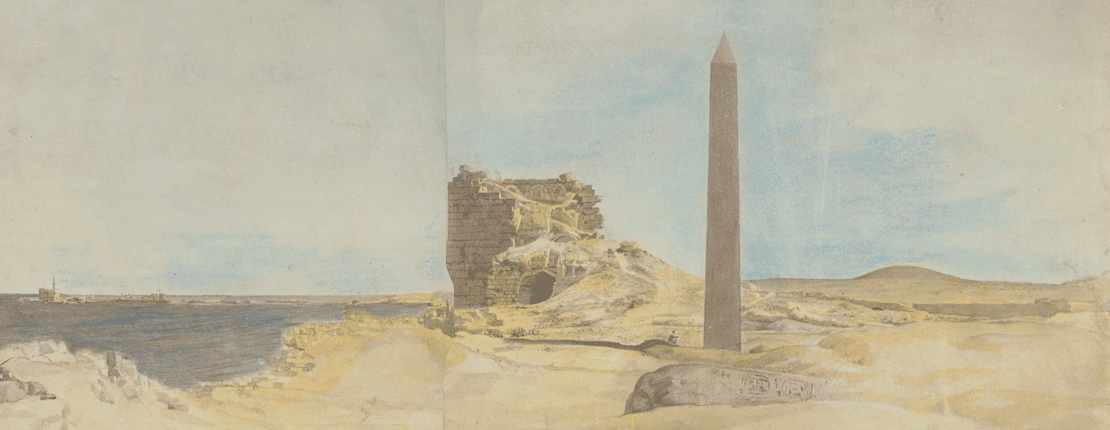
Caesareum
The Caesareum is one of the only Alexandrian sanctuaries whose location is known thanks to the two obelisks that marked its entrance – one of which was toppled by an earthquake in the Middle Ages – and which were regularly described and drawn by travellers over the centuries. It covered a vast area – over 2 hectares – as shown by the urban salvage excavations undertaken by the CEAlex between 1992 and 2002 on four adjoining plots.
Cleopatra VII erected an altar dedicated to the cult of Mark Antony. However, after their defeat at Actium in 30 BC and their double suicide, Octavian, the victor, wanted to erase their memory and ordered their monuments and statues to be destroyed. He built a temple dedicated to the imperial cult, the Caesareum, and in 13 BC he brought from the sanctuary of Heliopolis, which was then in ruins and being used as a quarry, two obelisks that the pharaoh Thutmosis III had dedicated 15 centuries earlier to Ra, the Sun god, ruler of Heliopolis. The two obelisks, later dubbed Cleopatra’s Needles, were to remain in place for two millennia, while the rest of the temple was to undergo many changes, particularly during the Christian period, until it finally disappeared completely. The unusual size of the temple and sanctuary caught the imagination of the ancients, as is clear from Philo of Alexandria’s description:
“For there is no sacred precinct of such magnitude as that which is called the Grove of Augustus, and the temple erected in honour of the disembarkation of Caesar, which is raised to a great height, of great size, and of the most conspicuous beauty, opposite the best harbour… being a very extensive space, ornamented in the most magnificent and sumptuous manner with porticoes, and libraries, and men’s chambers, and groves, and propylaea, and wide, open terraces, and court-yards in the open air…”
ON THE EMBASSY TO GAIUS, trans. Charles Yonge
Each of the plots of land excavated by the CEAlex has yielded evidence enabling us to reconstruct the history of this sanctuary. Excavations at the Majestic Cinema revealed a thick wall and a layer linked to its foundation, containing a wealth of ceramic, amphora and numismatic material from the first phase of the temple, dated to the second half of the 1st century BC. On the Billiardo Palace site, a hypostyle hall with marble pillars and niches with rich stucco decoration dated back to the second half of the 1st century AD. The walls were covered in hydraulic plaster and the floor was waterproofed, highlighting the concern to protect it from humidity and suggesting that the building to which it belonged was partly buried. This room was converted into a cistern at the end of antiquity. A cylindrical marble base discovered on the same site bears an inscription in Greek, probably dating from AD 175, honouring a member of a brotherhood, an official who was responsible for maintaining Eikones Sebaston, images of the emperors. The portrait of Faustina the Younger, likened to Isis Pharia, is mentioned. This is echoed by the discovery of a statue of the emperor Septimius Severus. Excavations at the Lux Garage and Park Cinema (2000-2002) revealed a Christian cemetery dating from the 7th century AD, including mass burials, a phase with a whole series of cisterns and drains, and the remains of gardens.
-
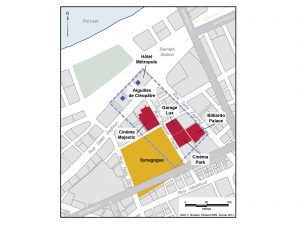
Presumed area of the Caesareum. CAD C. Shaalan, © Archives CEAlex -
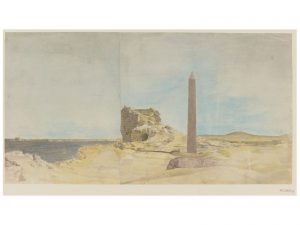
François Charles Cécile, « Aiguilles de Cléopâtre et tour des Romains », 1798. © Bnf -

Area of three excavation plots, the Billiardo Palace, Lux Garage to the left, and the Park Cinema to the right at the beginning of excavations. © Archives CEAlex -

Billiardo Palace. Plan and elevation of the hypostyle hall transformed as a cistern. Drawing I. Hairy, CAD A. Lamarche, © Archives CEAlex -

Billiardo Palace. Column bearing an inscription mentioning “the dining companions of the associated dedicated to the images of the emperors” Photo A. Pelle, © Archives CEAlex -
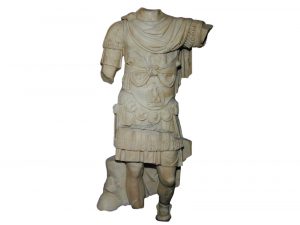
Lux Garage and Park Cinema: statue de Septimius Severus. Photo A. Pelle, © Archives CEAlex -
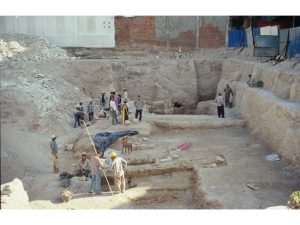
Lux Garage and Park Cinema: excavation of the Christian cemetery. © Archives CEAlex -
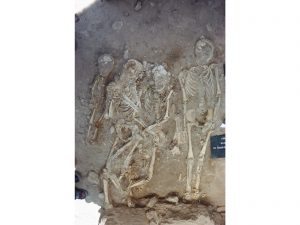
Lux Garage and Park Cinema: mass burial of individuals in shrouds G. Alix, © Archives CEAlex -
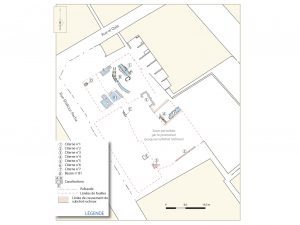
Lux Garage and Park Cinema: general plan of the site with cisterns. CAD A. Lamarche, © Archives CEAlex -
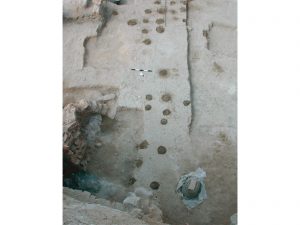
Lux Garage and Park Cinema: traces of plantations. T. Legrand, © Archives CEAlex
Further reading:
J.-L. Arnaud, « Sources et méthodes de restitution, les obélisques et le Césaréum d’Alexandrie » in J.-Y. Empereur (éd.), Alexandrina 2, ÉtAlex 6,Le Caire, 2002, 2e édition, 2012, p. 177-190.
S. Demougin, J.-Y. Empereur, « Inscriptions d’Alexandrie I : Un nouveau procurateur alexandrin », Alexandrina 2, Études Alexandrines 6, Le Caire, 2002, 2e édition, 2012, p. 149-159.
J.-Y. Empereur (éd.), Alexandrie, Césaréum. Les fouilles du cinéma Majestic, Études Alexandrines 38, Alexandrie, 2017.
G. Hairy, « Un chantier dans la ville : l’eau du Lux », in I. Hairy (éd.), Du Nil à Alexandrie : Histoires d’eaux, Catalogue d’exposition, Alexandrie, 2011, p. 314-333.
M.C. Petitpa, « Chantier du Lux : une citerne peut cacher un temple », in I. Hairy (éd.), Du Nil à Alexandrie : Histoires d’eaux, Catalogue d’exposition, Alexandrie, 2011, p. 334-343.
M. Seif el-Din, « Une statue cuirassée d’Alexandrie », Alexandrina 3, Études Alexandrines, 18, Le Caire, 2009, p. 119-133.
M. Seif el-Din, « Un portrait de prêtresse trouvé à Alexandrie » in J.-Y. Empereur (éd.), Alexandrina 2, ÉtAlex 6,Le Caire, IFAO, 2002, 2e édition, 2012, p. 139-147.
